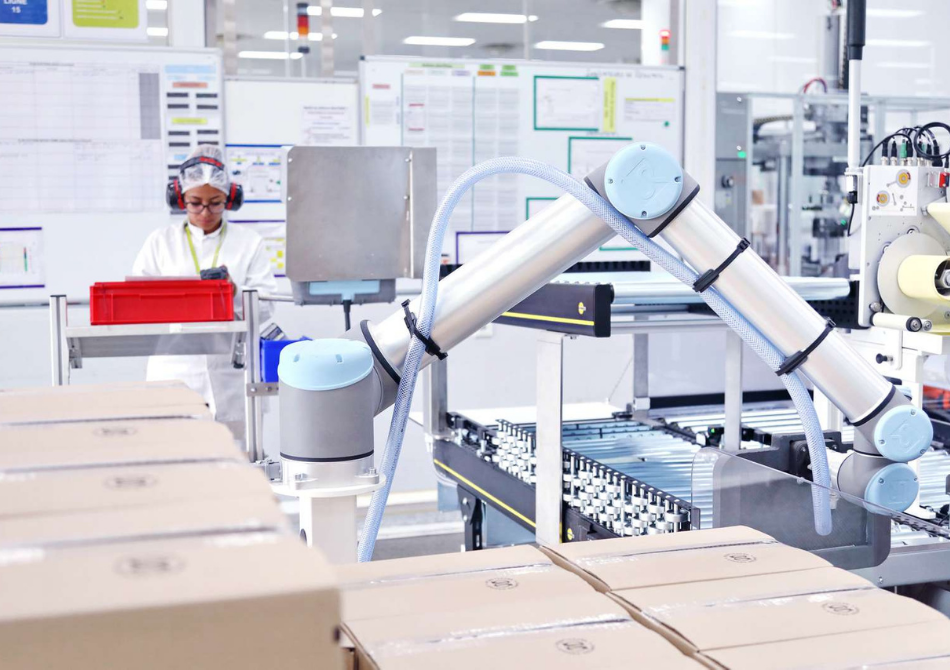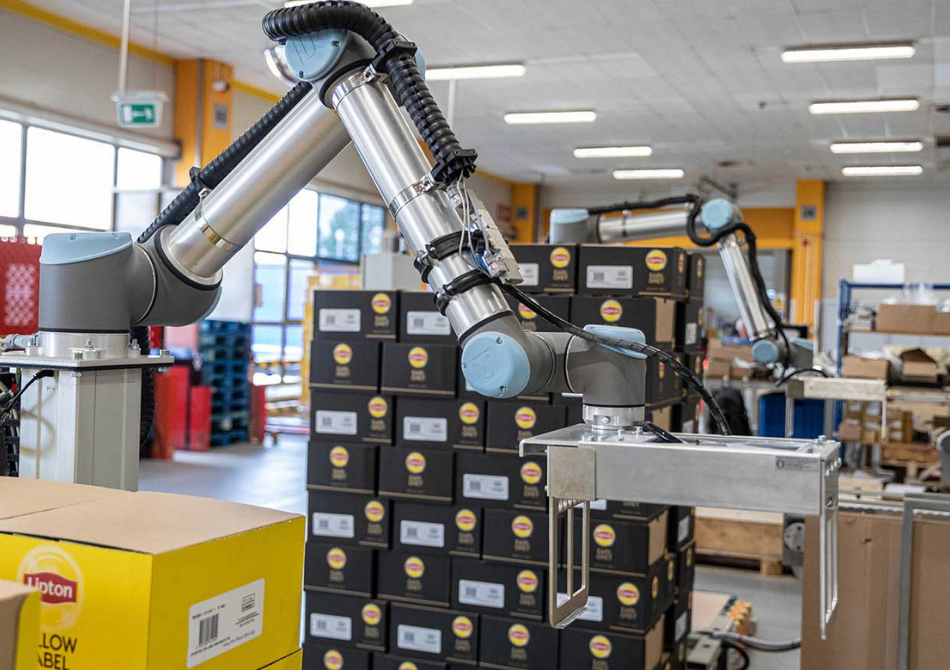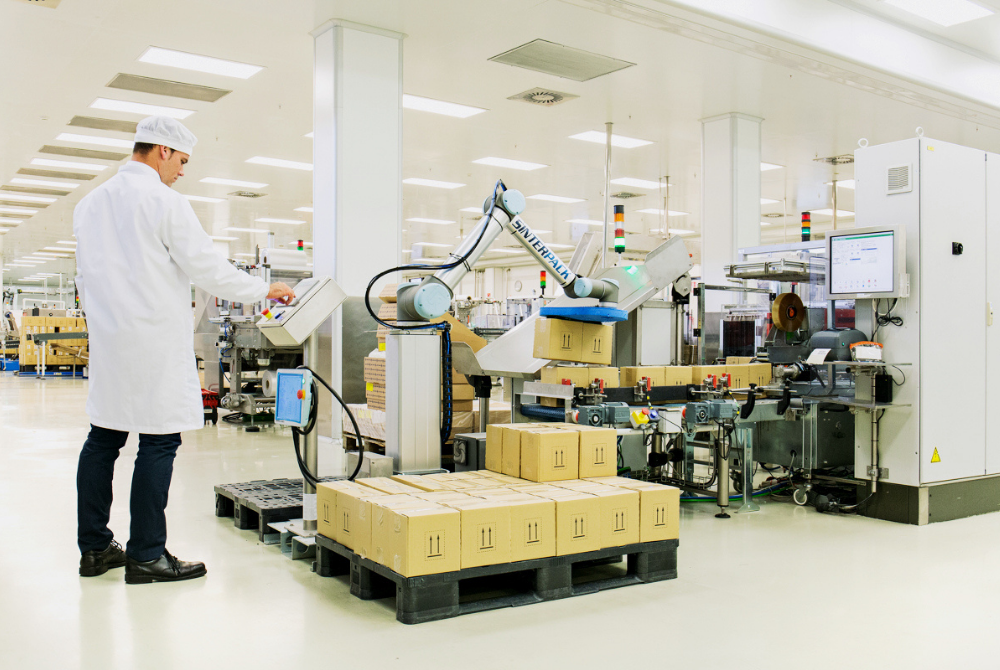Perhaps this scenario sounds familiar to you: An employee complains of back pain. Until now, he has been palletizing goods at the end of a production line or in the warehouse. Shortly afterwards, he is off work because of his pain. But it gets worse. He resigns because another company offers him a better job.
The question now is how you can protect your employees from health problems or even injuries when palletizing. Another important question is how you can attract and retain qualified specialists. The cobots from Universal Robots can be a great help, especially when lifting heavy loads or performing unergonomic movements.
But what can a palletizing cobot do?
As a rule, companies turn to automation when they want to become more productive. Cobots then take on a variety of tasks throughout production. Among other things, they load machines, assemble parts, check quality or process parts.
When automating palletizing tasks, it is not only economic factors that play a role. Occupational health and safety also plays a role here. Cobots not only stack reliably and uniformly, they also protect employees from injury. For example, the UR10e cobot can lift up to 12.5 kg with a reach of 1,300 mm. It does this 24/7 and with a high level of repeat accuracy.
Cobot use in palletizing is very interesting if companies want to handle different carton sizes with one system. Once the cobot has been trained, it can grip different products and stack them precisely on a pallet. Compared to conventional industrial systems, cobots can work alongside and with your employees and they take up significantly less space. If the risk assessment is successful, nothing stands in the way of collaboration between humans and robots. This also eliminates the need for safety fences and some integration costs. Pallets can then simply be transported away during operation.

How does palletizing automation work?
There are several ways in which cobots can be used for palletizing. You need three basic building blocks for this:
- A robot
- Suitable gripping technology
- A base
In addition, they must consider the following aspects so that the application is as simple and economical as possible:
- The footprint of the robot
- The safety measures of the system
- The stacking pattern
When an application is developed, these components and factors are brought together. For application development, the goal that the palletizing robot is to achieve must be clear, as must the individual conditions of the production environment.
The following scenario is conceivable: A potential cobot user wants to increase the throughput of his systems. However, manual palletizing of the products does not allow a higher throughput. In his cramped production facility, he now places a cobot between two pallets, which now continuously stacks the products. When one pallet is loaded, it uses the second. The full pallet is then replaced with an empty one by an employee.

What are the benefits of a palletizing robot?
Automation is essential in today's world for a variety of reasons. Cobots support companies in various areas. Palletizing is one of these areas that can be automated with cobots.
One example is the printing industry. Manufacturers have to produce ever more efficiently in order to hold their own against the competition. What's more, printed products weigh a lot. If an employee has to place this weight every day, the risk of back problems is high.
This is a solution with great potential for the printing industry.
Collaborative robots are also helping to make processes better and more efficient in other industries. Gustav Hensel, a company in the electronics industry, now uses a cobot for palletizing. In the past, valuable skilled workers were tied up with this work. Today, a UR10 stacks approx. 2.5 tons of packages in an 8-hour shift. Two Euro pallets are positioned next to the cobot to ensure that the system is optimally utilized. The optimization of the process is just one important result.
The employees are also delighted. Because they no longer have to lift tons of weight every week.
Is there a simple palletizing solution?
It is not always necessary to develop a new application. A ready-made solution can often be used quickly. One example is the Palletizer from Robotiq. This solution contains all the necessary elements to get started quickly and easily with automated palletizing.
The movements of the cobot are automatically generated by the program when you define the carton dimensions, weight and orientation of the cartons. In a second step, you select the dimensions of the pallet and, last but not least, you configure the pallet layout.
If you would like to find out more about this solution, please contact us.
